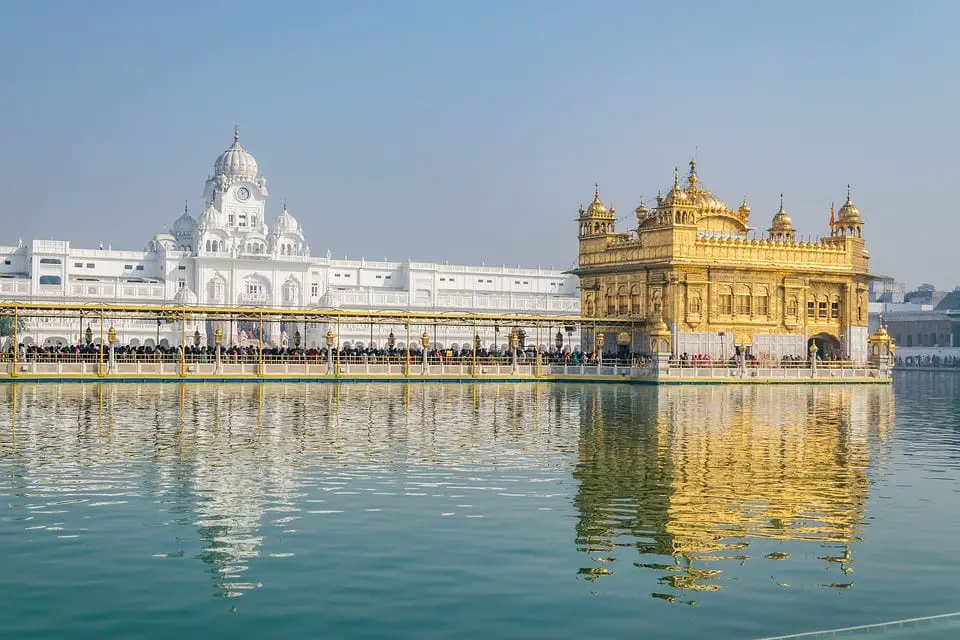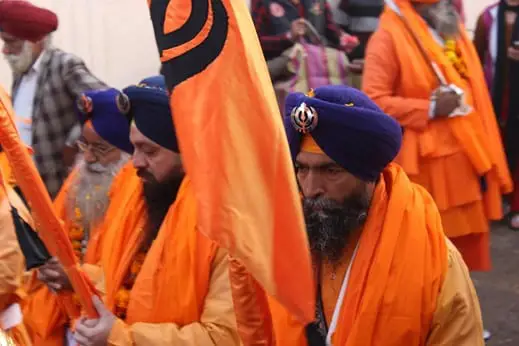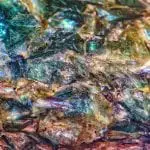Colors have a strong effect on our mind, emotions, and well-being. They play a dominant role in expressing a range of emotions and feelings with a single shade. Today, almost all colors come with their own set of meanings which can be used in a variety of contexts. They are also extensively used to symbolize the values of a particular group and distinguish one sect from the other. That is why color symbolism is a significant factor in all religions.
Most religions in the world demarcate themselves with at least one color that expresses the ideals of that particular community and helps in the identification of members belonging to the same. For instance, the green color symbolizes Islam, saffron is mostly related to Hinduism, red with Christianity, and so on. Similarly, the color blue is an important distinguishing factor for the people following Sikhism. Let’s dig deeper into the relationship between Sikhism and the color blue symbolism.
Sikhism
Sikhism is a popular world religion with origins in India. Although it is one of the youngest religions in the world, it is widely distributed across various regions. You can especially find Sikh communities in a large number in countries like India, Canada, the United States, and the United Kingdom. Since Sikhs form a major religious group, it is important for us to know about them and their culture.
Blue Symbolism in Sikhism
The term “Khalsa colors” refers to the colors belonging to Sikhism. Although many times different Sikh groups use different colors, the sacred colors of Sikhism are blue, saffron, white and black. Among all these shades, the blue color holds a distinct place in the Sikh culture. Commonly, the color blue symbolizes inspiration, wisdom, and stability. It is also a symbol of calmness, and freedom. We also often use the term feeling blue to indicate sadness. However, in Sikhism, the color of the sky and the sea- blue refers to the inherent values of the religion that evolved over time. So below, we’ll explore the different meanings the blue color symbolizes in Sikhism.

Blue- A Symbol of Calmness
If you have ever been to a gurdwara (the religious place of Sikhs), you’ll find blue color in the calming waters of the small lakes, called Sarovars, built all around. The blue color calms the mind and creates a peaceful atmosphere all over the gurdwara that helps the devotees in forgetting all their troubles and getting closer to the divine. The blue color also creates an ambience of positivity and serenity that makes visiting a gurdwara such a wonderful experience.
Blue color and the Khalsa group in Sikhism
In Sikhism, the blue color is most strongly associated with the tenth guru of Sikhism- Guru Gobind Singh. It was Guru Gobind Singh who had established Khalsa in the first place. The term “Khalsa” refers to both the Sikh community as well as a special group that was initiated by the Sikhs. On the day of Its formation, Guru Gobind Singh had raised a blue flag. It was a key event in the history of the Sikhs.
Guru Gobind Singh, the last Sikh Guru, had started the Khalsa group after the execution of his father and the ninth Sikh Guru-Tegh Bahadur. The then Mughal Ruler, Aurangzeb had ordered to execute Guru Tegh Bahadur because he had refused to change his religion. The blue color became a primary color of the Khalsa group signifying that this group was of warriors with the duty of protecting people from forceful religious conversion. Here, blue symbolism represents martyrdom and courage, It is the color of Sikh warriors.
Guru Gobind Singh’s Blue colored horse
In Sikh folklore and songs, Guru Gobind Singh’s blue colored horse is extremely popular. The rare blue-colored horse is a part of numerous stories and paintings associated with the Guru and is an important figure in Sikhism. In fact, Guru Gobind Singh was also referred to as “Neele ghode wala” or “the one with the blue horse”. The name of the horse was “Neela” due to its blue color.
The gurdwara at Putthi Sahib (Punjab) commemorates a popular incident when Guru Gobind Singh arrived at this place from a long journey seated on his blue horse. There they met a local artisan working at a furnace with baking bricks. When the Guru asked him if he knew a place where they could rest, he mocked at him. The artisan further challenged him that if he was a true Guru, he would sleep in the hot furnace instead.
The man had not only posed a challenge to him but also indirectly questioned the divinity of the founder of Sikhism- Guru Nanak Dev. In such a situation, Guru Gobind Singh had no choice but to usher Neela to move forward. However, as soon as Neela stepped on the side of the furnace, it instantly cooled down. The Guru then spent the entire night in the cool furnace. You can still find impressions of the blue horse’s hooves inside the gurdwara.

Blue clothing (Bana) in Sikhism
In Sikhism, blue symbolism is also seen in the clothing of Nihang (also called Akali) or the armed Sikh warriors. Traditionally, Nihang adorns super electric blue colored uniform that Guru Gobind Singh had selected. The bright blue color of Nihang helps in distinguishing the warrior class from others. They also wear a lofty blue colored turban that called “dastar bunga”. This warrior class is highly respected among all the Sikh communities. Even today, they are duty-bound in defending their people and religion in times of war.
The blue uniform of Nihang is also called Bana. It is also related to Guru Gobind Singh’s Baba Fateh Singh (son of Guru Gobind Singh) who dressed in blue garments to represent “Akaal Purakh” meaning timeless being. Here, the blue symbolism also points to the concept of immortality. The same outfit was adopted by the Nihang Singhs.
Blue Color and Guru Nanak Dev
Guru Nanak Dev, the founder and the first Guru of Sikhism, was famous for wearing clothes having elements belonging to both Hinduism and Islam wherever he traveled. So, in one of his travels to the holy place of Mecca, Guru Nanak Dev had worn blue colored clothes. He had also carried some necessary tools and weapons that all Sikhs have the right to carry. The Nihang warriors adopted the same outfit and thus, many people believe that Guru Nanak was the first Nihang Singh himself.
Blue color and the Flag of Sikhism
The flag of the Sikh religion is known as “Nishan Sahib.” It is a triangular flag made of cotton or silk with the Sikh emblem. The design and the color of the flag evolved with time. Initially, it was white, then it was made yellow and was referred to as “Basanti”. Later, after the formation of Khalsa, Guru Gobind Singh raised a blue flag which is used today as well among the Nihang Singhs.
However, at present, mostly a saffron flag is used with a navy-blue emblem called “Khanda”. The possible reasons for the choice of these colors for the flag are that saffron color represents asceticism, while the blue symbolism reminds every one of the temporal affairs. So, a balance needs to be made between the two as Sikhism does not believe in strict asceticism. It is hoisted high on a flagpole in gurdwaras so that everyone can locate the nearest gurdwara.
Blue color and influence of other religions on Sikhism
When Sikhism was established, Hinduism and Islam were the major religions in the Indian subcontinent. It is widely known that Sikhism is a fusion of concepts taken from both religions. While saffron is mostly associated with Hindus, blue was often associated with Mughal rulers who followed Islam. The founder, Guru Nanak Dev, never propagated anyone religion but believed in unifying the best practices of both. It can be said that in Sikhism, saffron and blue symbolism represents the combination of both Hinduism and Islam.

Blue colored Turban (dastar) in Sikhism
Dastar, the turbans that form an essential part of the Sikh clothing have significant religious importance. It is a symbol of equality, courage, spirituality, and confidence. It is mostly worn to cover the uncut hair of Sikhs which is also one of the primary codes of conduct all Khalsa Sikhs follow. Although the turbans are available in a variety of colors, blue-colored dastars hold special importance as it is one of the sacred Khalsa colors. Blue-colored turbans are worn in all religious events and Sikhs occupying high religious or official positions also tend to wear blue turbans especially in India.
Overall, it can be concluded that the blue color holds significant religious, cultural, and historical importance in Sikhism. The blue symbolism in the Sikh community seek to represent qualities of courage, temporal affairs, and martyrdom. It is also a symbol of confidence, and spirituality.



